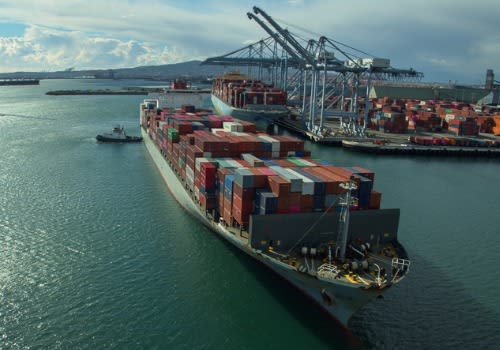
Supply chain management in 2020 was severely challenged by the COVID-19 outbreak. Although select segments of some production flows saw improvement in 2021, the entire process still faces seemingly impossible challenges in 2022. We’ll look at a few of those challenges to supply chain management all businesses will wrestle with during 2022, from the acquisition of basic materials, the transformation into goods and services, and the delivery to end consumers.
1. Demand Uncertainty
As businesses continue to adapt to the post-COVID-19 breakout era by adding supply chain redundancy (finding multiple suppliers of the same item to serve as backups in case the primary supplier is somehow compromised), further embracing digital transformation, and holding greater inventory, they will meet potentially drastic changes in both upstream and downstream supply chains.
2. Inflation
One of the challenges in supply chain management to overcome is inflation. Inflation both causes and is caused by slow-downs in the supply chain. Though the Federal Reserve has set a target of two percent for inflation, rates for the preceding 12 months were seven percent in February 2021 and 7.9 percent in February 2022. Demand was up in 2021, contributing to port congestion and delivery slow-downs, which led to an increase in prices. Supply was down in 2021 due to the ongoing challenges in global supply chain management, including labor shortages and increased prices.
3. Increased Consumer Demand
Having people clamoring for more of your products and services would normally be seen as a good thing. But this increase in demand turned into too much of a good thing in 2021 when demand for many goods and services, particularly durable goods, increased. Increased demand for products and services means an increase in competition for raw materials, causing potential disruptions in supply chains.
4. Raw Materials
Whether the raw materials of your far-upstream supply chain are relatively rare (lithium, palladium, gold, etc.) or are relatively common (quartzite, copper, steel, etc.), raw material providers have only recently returned to pre-pandemic levels of output and are struggling to meet the increased demands of 2022. While some raw materials are starting to return to pre-pandemic production levels, others are not.
About half of the world’s semiconductor-grade neon is produced by two firms in Ukraine. Faced with increasing civilian deaths and infrastructure damage caused by Russian shelling of Ukrainian cities, both Ukrainian firms have ceased operations. Were the Russian violence to end soon, it is doubtful production would return to pre-invasion levels any time soon. Faced with uncertain computer hardware supplies in 2022, many small- and medium-sized businesses are bypassing some challenges in supply chain management with regard to their web hosting by turning from a CapEx-funded on-premises infrastructure to hosted infrastructure.
5. Chip Shortage
Related to (and stemming from) the issues with raw materials, we are facing a global chip shortage. From automotive to MedTech, every sector is feeling the pains of the current silicon chip shortage. With demand for chips expected to double within the next five years, the shortage is expected to persist through 2022 and will affect PC and server infrastructure for some time to come. For eCommerce, turning to cloud computing can be a great way to reduce costs by only paying for server resources as they’re used.

6. Port Congestion
Already beleaguered by pandemic-driven chronic congestion, U.S. ports on the west coast are expected to see union-led work slowdowns as they near their contract renegotiations in July of 2022. In addition to labor issues, some ports, most notably the port of Los Angeles, continue to lag behind in much-needed digitization efforts, leading to more challenges in supply chain management.
7. Labor
Every sector of the economy has been hit with pandemic-related labor shortages. In developed markets, many older, upper-income workers voluntarily chose early retirement. In emerging markets, most notably China and India, lockdown restrictions led to job elimination and wage reduction, causing skilled migrant workers to move back to their respective provinces and states. As future uncertainty fades, these trends are expected to reverse somewhat.
8. Just-In-Time Inventory Management
JIT (just-in-time) inventory management is a method of managing your inventory in such a way that what you need, from raw materials to finished products, is available to you just before you need it. Even if you aren’t using JIT now, at least some of your upstream providers and suppliers definitely are.
Pre-COVID-19 breakout, many supply chain managers swore by just-in-time inventory management as a means to both reduce costs and increase efficiency. Post-Covid-19 breakout, it is now clear to all that this approach is extremely vulnerable to systemic shock. Suppliers can’t forecast lead times, producers can’t forecast market demand, and transporters can’t forecast delivery dates. Supply chain managers now struggle to refactor their strategies, designs, and dependencies, all with an eye on improving supply chain resilience. This takes time to figure out, and until the dust settles, just-in-time inventory management is all too often too-darned-late.
9. Storage Capacity Constraints
One of the biggest challenges in supply chain management is storage capacity constraints. Though supply chain managers would like to increase held inventory of materials and product supply, available warehouse space is limited, and acquisition of new space can be both timely and expensive. For eCommerce businesses, dropshipping or third-party logistics (3PL) can help with onsite storage capacity constraints. Hosting in a cloud computing environment allows eCommerce sites to skip the step of buying and setting up all the hardware and software required to self-host, a step made much more difficult and time-consuming by material shortages.
10. Last-Mile Delivery
Though customers are returning to in-store and on-site purchases, customer demand for staple items has shifted somewhat to last-mile delivery rather than in-store pickup. Initially, customers in the early days of the pandemic desired delivery for reasons of safety; now, customers requesting delivery are increasingly citing convenience as their major motivation. Though the gig economy–relying on freelance workers under short-term contracts–helped with the demand for delivery during the initial pandemic response, businesses are now looking for more profitable, longer-term solutions.
Consolidate IT Infrastructure with a Managed Host
The challenges in supply chain management caused by this ongoing Great Supply Chain Disruption are expected to last for the foreseeable future. Businesses that consolidate their hosting infrastructure will be better able to make good use of the opportunities these challenges will uncover.
[ad_2]
Source link







